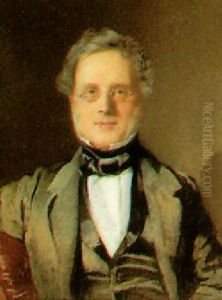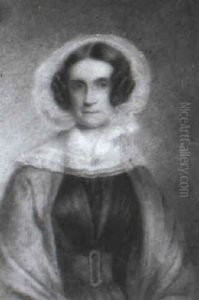Thomas Heathfield Carrick Paintings
Thomas Heathfield Carrick was a 19th-century British portrait painter who gained recognition for his miniature portraits, specifically in watercolor on ivory. Born in 1802 in London, Carrick was part of a period where portrait miniatures were highly sought after by the public, serving both as personal mementos and as status symbols. Carrick's work reflects the stylistic shifts of his time, showing the transition from the Georgian to the Victorian era.
Carrick’s artistic talents were evident from a young age, leading him to study under some of the notable artists of his time. Although not much is documented about his early training, it is known that he was greatly influenced by the works of Sir Thomas Lawrence, a leading English portrait painter and president of the Royal Academy. Carrick's early works were often compared to those of Lawrence, due to their similar style and high-quality craftsmanship.
The majority of Carrick's career was based in London, where he established himself as a portraitist. He developed a reputation for accurately capturing the likenesses and personalities of his subjects, which included notable figures of the era. Carrick exhibited his works at the Royal Academy and the Society of British Artists, which helped to solidify his reputation in the art community.
Carrick's miniatures are characterized by their delicate brushwork and attention to detail. His portraits are often noted for their lifelike quality and the skillful use of lighting to enhance the features of the sitter. Despite the small scale of his works, Carrick was able to convey a sense of grandeur and significance in his portrayals.
By the time of his death in 1875, Thomas Heathfield Carrick had left a legacy as one of the foremost miniaturists of his generation. His works continue to be appreciated for their technical skill and the window they provide into the styles and fashions of the early to mid-19th century Britain.






